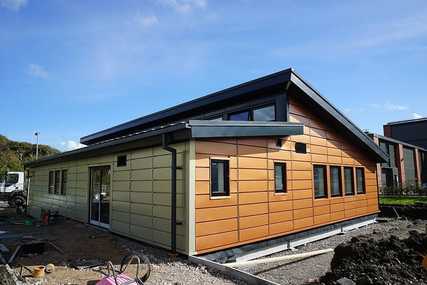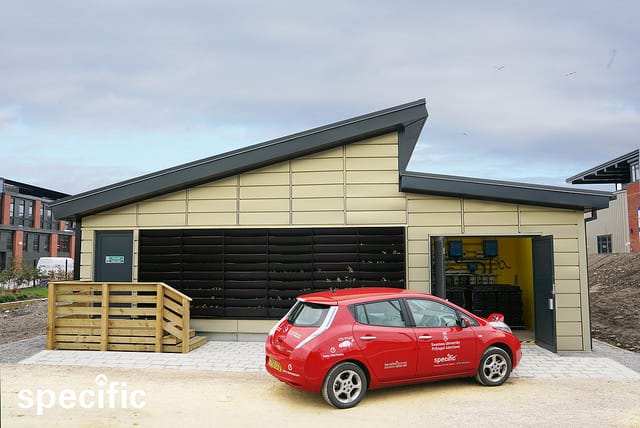Case Study: Active Clasroom, Swansea University Bay Campus
|
The Active Classroom is the latest full-scale building demonstration project created by the SPECIFIC project to show how buildings can generate, store and release their own energy. It is located on Swansea University’s Bay Campus and contains a laboratory and classroom which will be used for teaching students. It will also be monitored closely, enabling researchers to test and validate building performance, and to see how users interact with the technology.
The building took just 14 weeks to construct and all major components are recyclable with no plaster board or concrete used. Key features include:
To download the project's case study brochure - click here. |
To watch a short video showcasing the building - click here.
For another video about houses as power stations - click here. |


